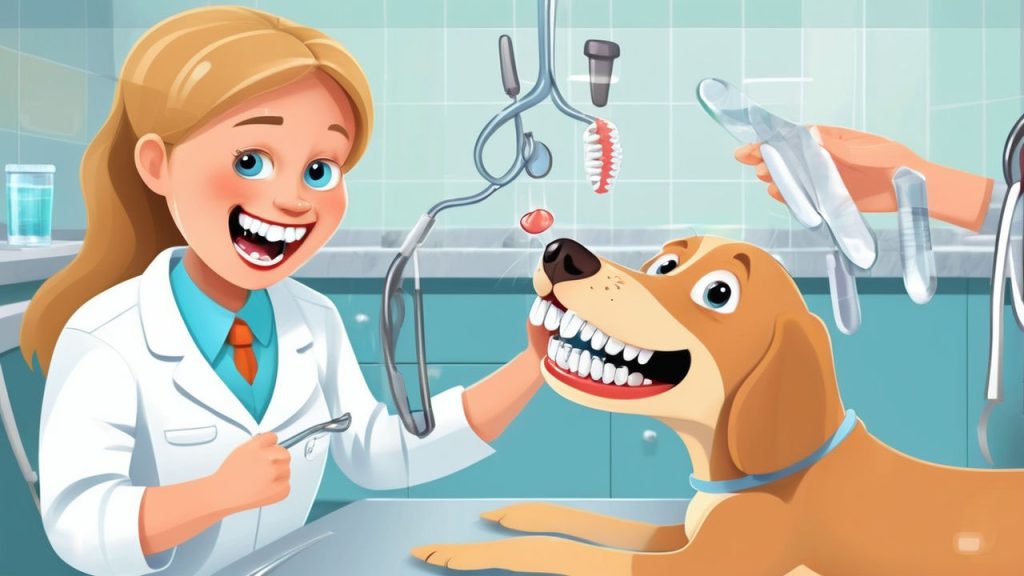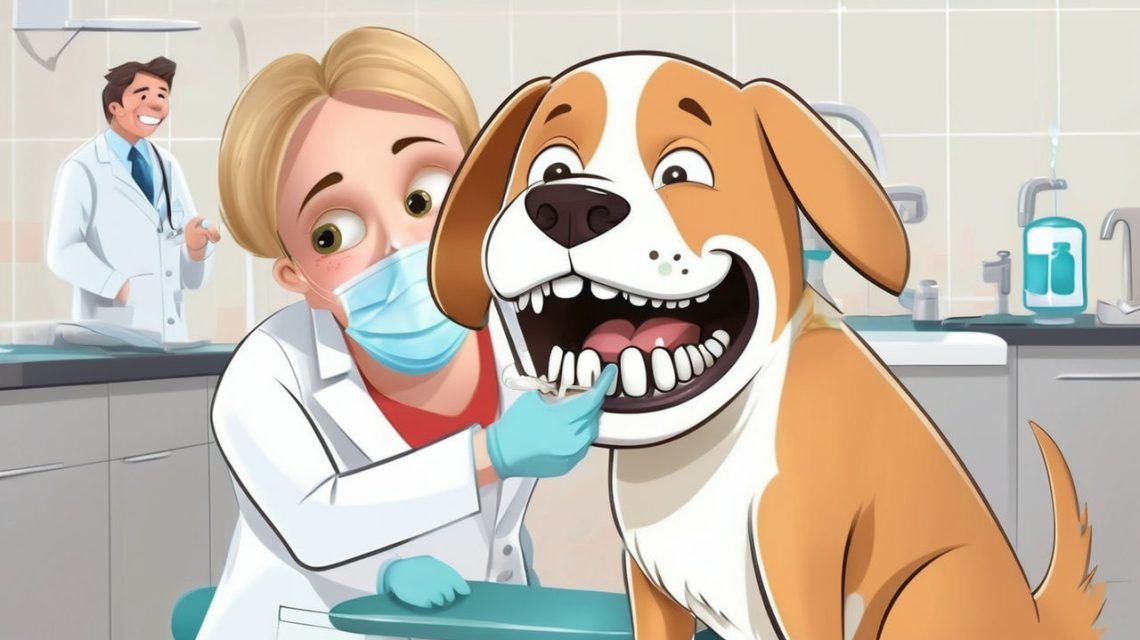Dog Dental Treatment: Keep Your Pet’s Teeth Healthy
Taking care of your dog’s dental health is just as important as maintaining their overall well-being. However, dental care for dogs is often overlooked by many pet owners. Without regular dog dental treatment, plaque and tartar buildup can lead to gum disease, tooth decay, and more serious health problems like infections that spread to other organs. By ensuring that your dog receives proper dental care, you can prevent pain and discomfort while improving their quality of life.
In this article, we’ll explore the importance of dog dental treatment, what it involves, and how you can support your pet’s oral health at home.
Why Is Dog Dental Treatment Important?
Many pet owners underestimate the impact of dental health on a dog’s overall well-being. Just like humans, dogs are prone to dental issues if their teeth and gums aren’t cared for properly. Over time, plaque builds up and hardens into tartar, which can cause gingivitis and other periodontal diseases. These problems don’t just affect the mouth—they can lead to more serious health complications if left untreated.
1. Preventing Dental Disease
The most common dental problem in dogs is periodontal disease, which affects the gums and bones supporting the teeth. This disease can cause pain, tooth loss, and infections that can spread to the heart, liver, and kidneys. Regular dental treatments help prevent plaque buildup and reduce the risk of gum disease.
2. Maintaining Your Dog’s Comfort
Dogs with dental issues may experience difficulty eating, bad breath, and discomfort when chewing. This discomfort can affect their mood and energy levels. By addressing dental problems early, you can keep your dog comfortable and happy.
3. Improving Overall Health
Poor dental health can lead to bacteria entering your dog’s bloodstream, which can affect vital organs and lead to systemic health issues. Regular cleanings and dental checkups can prevent this by keeping harmful bacteria at bay.
What Does Dog Dental Treatment Involve?
Dog dental treatment goes beyond just cleaning your dog’s teeth. A comprehensive dental care plan from a veterinarian includes a thorough examination, professional cleaning, and preventive measures to keep your pet’s teeth and gums healthy.
1. Professional Dental Cleaning
Veterinary dental cleanings are an important part of your dog’s overall health routine. These cleanings are usually performed under anesthesia to ensure that the vet can clean below the gum line, where most dental problems begin. During the cleaning, the vet removes plaque and tartar buildup, polishes the teeth, and checks for any signs of gum disease or tooth damage.
- Tip: Professional cleanings should be done annually, or more frequently for dogs prone to dental issues.
2. Dental Examinations
A regular dental examination helps identify potential problems before they worsen. Vets will check for signs of gingivitis, tooth decay, infections, or loose teeth. X-rays may be taken to assess the health of the tooth roots and surrounding bone structure.
3. Tooth Extractions
In cases where a tooth is severely damaged or infected, an extraction may be necessary. This is often done to prevent the spread of infection and alleviate your dog’s pain. While it sounds extreme, extractions are a common part of dental care for pets and can greatly improve their comfort and quality of life.

Signs Your Dog Needs Dental Treatment
It’s not always easy to know when your dog is experiencing dental problems, but there are certain signs that indicate they need professional care. Being aware of these symptoms helps ensure you catch dental issues before they escalate.
1. Bad Breath
One of the most common signs of dental problems in dogs is persistent bad breath, also known as halitosis. While dog breath isn’t always pleasant, a foul odor can indicate bacteria buildup or gum disease.
2. Difficulty Eating or Chewing
If your dog starts to avoid food, drops food while eating, or chews on one side of their mouth, it could be a sign of dental pain. Difficulty eating or a reduced appetite can be linked to issues like broken teeth, gum inflammation, or infections.
3. Red or Swollen Gums
Healthy gums should be pink and firm. If your dog’s gums are red, swollen, or bleeding, it could be a sign of gingivitis or another form of gum disease. Regular checkups help catch these signs early and prevent further complications.
4. Yellow or Brown Tartar Buildup
If you notice yellow or brown discoloration on your dog’s teeth, especially near the gum line, it’s a sign of tartar buildup. While you can manage some plaque at home with regular brushing, professional cleanings are necessary to remove tartar.
How to Care for Your Dog’s Teeth at Home
While professional dental treatment is essential, taking steps to care for your dog’s teeth at home is equally important. Implementing a consistent dental care routine helps reduce the risk of serious dental problems and can extend the time between professional cleanings.
1. Brush Your Dog’s Teeth Regularly
Brushing your dog’s teeth is one of the most effective ways to prevent plaque and tartar buildup. Use a dog-specific toothbrush and toothpaste (never human toothpaste, as it can be harmful to pets) to clean their teeth at least a few times a week. Regular brushing helps maintain your dog’s oral health between professional cleanings.
- Tip: Start slowly if your dog is new to tooth brushing. Let them get used to the toothbrush and toothpaste by allowing them to sniff and taste it before attempting to brush.
2. Provide Dental Chews and Toys
Dental chews and toys are a great way to promote oral health while keeping your dog entertained. Chewing on these items helps reduce plaque buildup and can even help with bad breath. Look for products approved by the Veterinary Oral Health Council (VOHC) for added assurance.
3. Use Water Additives or Oral Sprays
Water additives and oral sprays are another way to support your dog’s dental health. These products contain ingredients that help reduce plaque and freshen your dog’s breath. Simply add the product to your dog’s water bowl or spray it into their mouth as directed.
How Often Should Your Dog Receive Dental Treatment?
The frequency of dental treatment depends on your dog’s breed, age, and individual health needs. However, most vets recommend annual dental cleanings to keep your dog’s teeth and gums healthy.
1. Small Breeds vs. Large Breeds
Small dog breeds are often more prone to dental issues due to the size and shape of their mouths. As a result, they may require more frequent dental cleanings—sometimes twice a year. Larger breeds may not need cleanings as often, but every dog should receive regular checkups to monitor their dental health.
2. Senior Dogs
Older dogs are at higher risk for dental problems, including tooth decay and gum disease. Senior dogs often require more frequent dental care to manage these issues and maintain their quality of life. Regular exams and cleanings become especially important as dogs age.
Preventing Dental Issues Before They Start
The best way to avoid dental problems in your dog is by focusing on prevention. Combining professional cleanings with a good at-home dental care routine is key to keeping your dog’s mouth healthy.
1. Regular Checkups
Taking your dog to the vet for regular checkups allows potential dental issues to be caught early. Your vet can recommend when your dog should have their next dental cleaning and provide tips for maintaining their oral health at home.
2. Consistent Oral Care
Consistency is crucial when it comes to caring for your dog’s teeth. Brushing regularly, offering dental chews, and using oral sprays or additives will help minimize plaque buildup and reduce the chances of needing extensive dental work.
FAQs About Dog Dental Treatment
How often should I brush my dog’s teeth?
- Ideally, you should brush your dog’s teeth daily, but brushing at least three times a week can help prevent plaque buildup.
Is dog dental cleaning really necessary?
- Yes, professional dental cleanings are essential for removing plaque and tartar that can’t be cleaned with regular brushing. These cleanings also help detect early signs of dental disease.
Can dental issues affect my dog’s overall health?
- Yes, untreated dental problems can lead to infections that spread to other organs, such as the heart and kidneys. Maintaining your dog’s oral health helps prevent these serious complications.
What are the signs of dental disease in dogs?
- Common signs include bad breath, difficulty chewing, swollen or bleeding gums, and tartar buildup. If you notice any of these symptoms, consult your vet for a dental checkup.
How much does dog dental treatment cost?
- The cost varies based on location, the severity of the dental issue, and the clinic. However, regular cleanings typically range from $200 to $500. Early prevention can help reduce the need for costly treatments.


